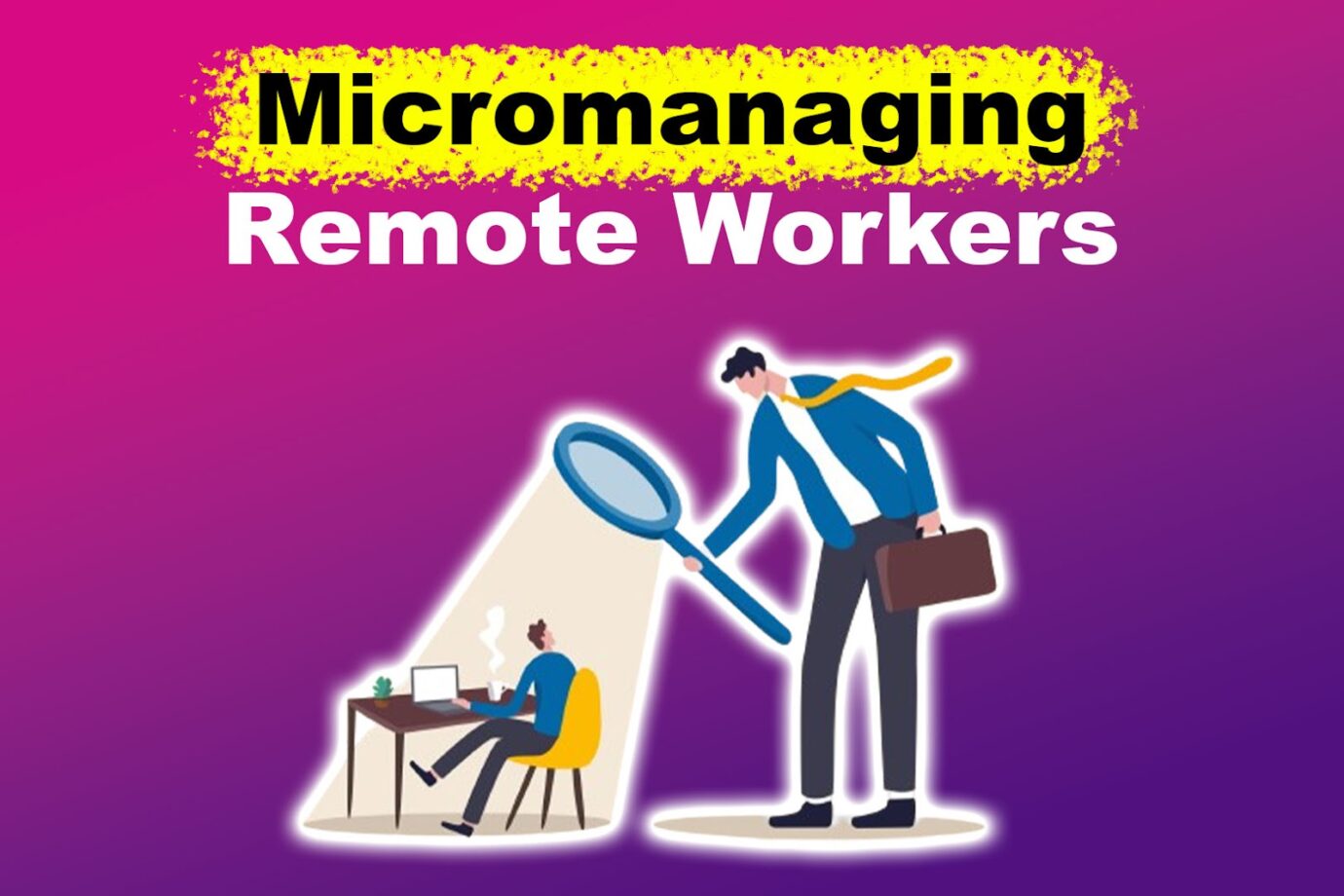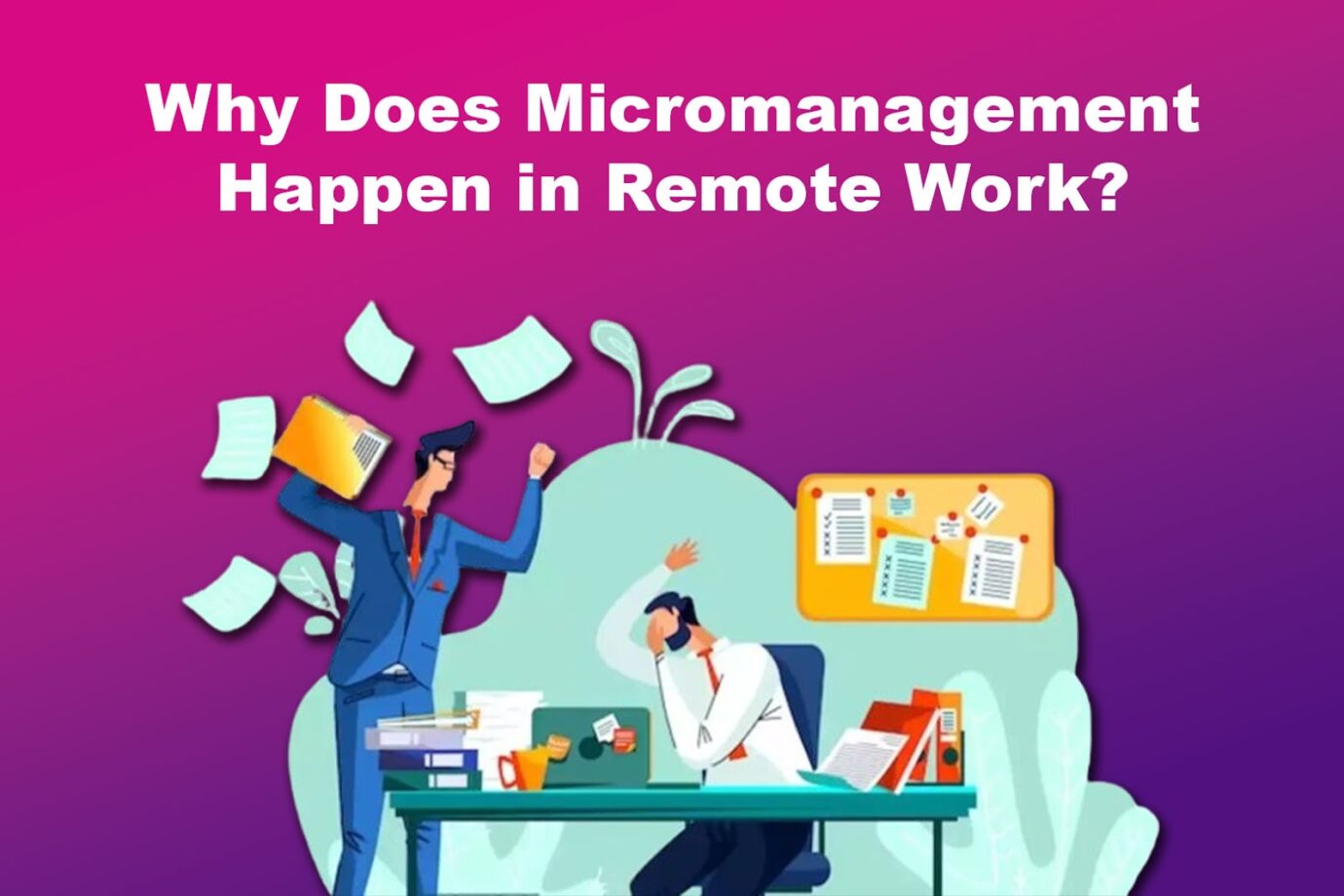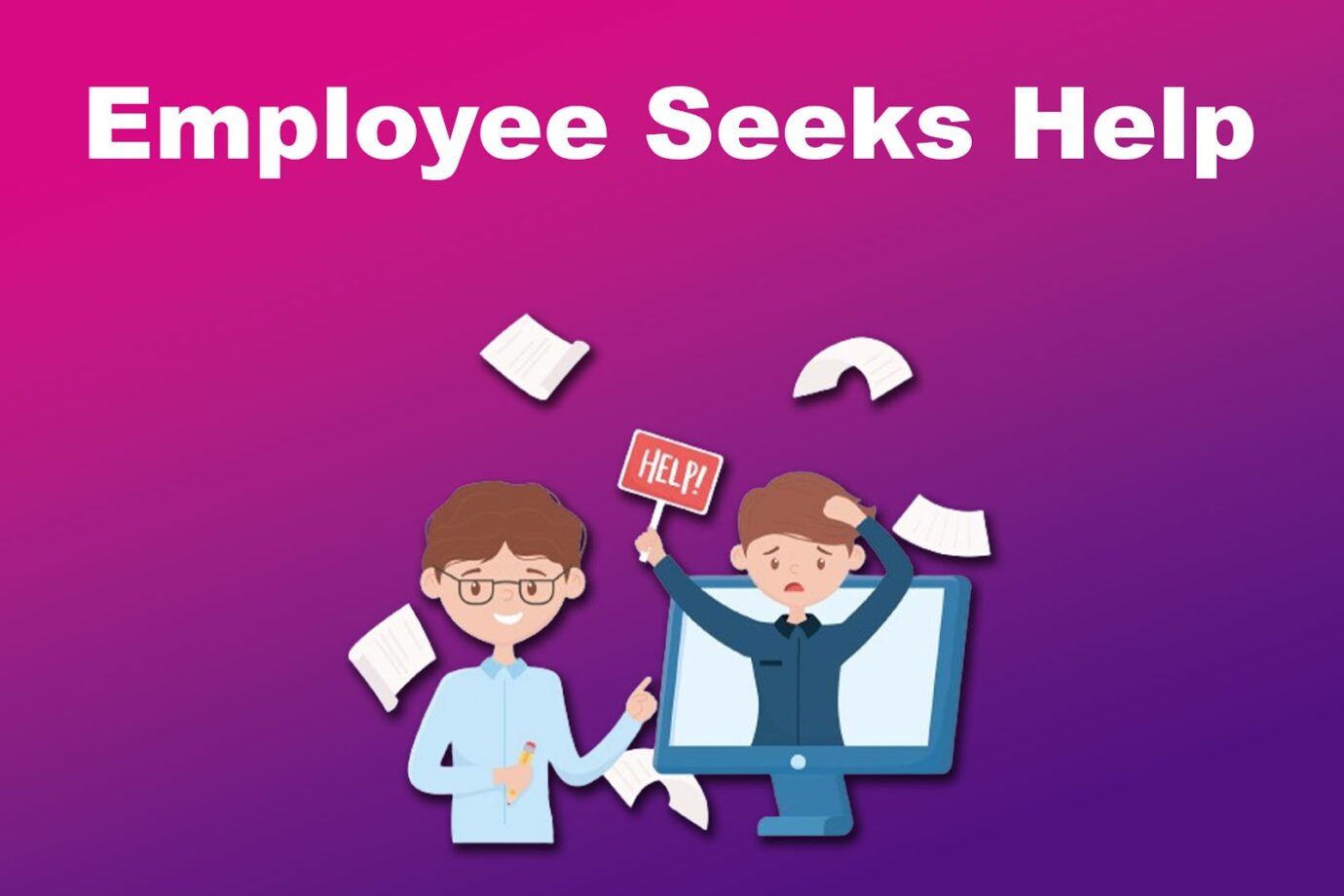Micromanaging remote employees can harm productivity and morale. In today’s fast-paced work environment, trust and autonomy are crucial for the success of remote teams.

This article will explain why micromanaging remote employees is counterproductive and not ideal. It will also provide tips on holding employees accountable without micromanaging.
What is Micromanaging?
Micromanaging means focusing on small details in management and exerting extreme control over an employee or situation. It is a negative management style that involves excessive supervision, control, and limited task delegation.
A micromanager is also known as a helicopter boss, a term originating from “helicopter parenting,” where parents closely monitor their children, not allowing them autonomy. This closely resembles how micromanagers oversee their employees.
Due to its negative impact on individuals and the company, micromanagement is generally seen as detrimental to organizational success. These effects can include strained relationships between managers and teams, hindering collaboration, creativity, and development.
Read this article from LinkedIn to learn more about micromanaging.
What Are the Signs of a Micromanager?
These are some of the most common signs of micromanagement in remote work:
- Constant Monitoring.
A common sign of micromanagement is the constant monitoring of employees’ work and frequent requests for updates, even for small tasks. - Reluctance to Delegate.
Micromanagers often struggle to delegate tasks and prefer to maintain control over all project details due to their lack of confidence in others’ abilities. - Excessively Detailed Instructions.
Micromanagers often give overly detailed instructions, restricting employees’ autonomy and creativity. They overemphasize minor details that unnecessarily complicate even simple projects. - Fear of Missing Out.
Micromanagers often need constant visibility in communication channels. They do this because they fear being excluded from discussions and decision-making without their knowledge. - Hates Feedback.
Micromanagers often dismiss input from team members, believing their approach is superior. They resist feedback as it questions their control and superiority. They view criticism as challenging their authority and competence, potentially exposing their weaknesses.
Read this Forbes article written by 13 Forbes Coaches Council experts about Forbes about the signs of being a micromanager.
Why Does Micromanagement Happen in Remote Work?

Micromanagement happens in remote work mainly because of the absence of physical presence and employee visibility. Other reasons include concerns about productivity and difficulties in evaluating employee engagement and progress from a distance.
Micromanagement in remote work often arises from the employer’s lack of trust in remote employees. They lack confidence in their team members’ abilities, resulting in constant oversight and doubt about the quality of work produced.
Digital communication and the absence of face-to-face interaction can exacerbate these tendencies, resulting in frequent check-ins and task monitoring.
This can also lead to increased monitoring and scrutiny due to trust issues. These factors could impact employee autonomy, morale, and productivity if not handled properly.
According to this article from CNBC, 73% of employees view micromanagement as the most significant red flag in the workplace. 46% of respondents from a Monster survey of 6,000 employees also stated that micromanaging would lead them to resign.
How Does Micromanagement Affect Remote Workers?
Micromanagement affects remote workers in numerous ways, many of which are not positive.
Here is how micromanagement affects remote workers:
- Decreased Morale.
Constantly micromanaging remote workers can lower morale and confidence. This would ultimately result in feelings of being undervalued and reduced motivation. - Reduced Productivity.
Micromanagement disrupts the workflow and hinders progress, impacting an employee’s ability to consistently deliver high-quality work on time. -
Increased Stress.
Micromanagement can increase stress levels, affecting employees’ mental health and job satisfaction. Constant monitoring, performance pressure, and lack of autonomy can also contribute to burnout among remote workers.
- Decreased Creativity.
Constant scrutiny can hinder creativity and innovation by discouraging employees from exploring new ideas or methods. - Strained Relationships.
Micromanagement can hinder the development of trust and collaboration and damage relationships between managers and remote employees. This can result in communication breakdowns and resentment. - High Turnover Rate.
Micromanaging remote workers can lead to high turnover rates and negative work environments. While a high turnover rate might seem good, employees may feel their work isn’t good enough and are demotivated to stay in the company.
If you are a remote worker, here is a helpful article on responding to micromanagers or helicopter bosses from Indeed.
How to Avoid Micromanaging Remote Workers
Here’s how to avoid and hold remote employees accountable without micromanaging:
Step 1: Hire and Train the Best Talent
When managers micromanage, it reveals a lack of trust in their employees’ skills. It’s important to hire competent individuals who can work independently. Additionally, it’s important to offer comprehensive training and provide remote workers with the necessary tools for effective task completion.
Training to prevent micromanaging remote workers is vital for creating a positive work environment. It improves efficiency, helps employees complete tasks effectively, and builds trust-based leadership.
Are you a remote worker who sometimes experiences micromanagement from your leader? Check out how you can keep yourself motivated while working from home.
Step 2: Be More of a Leader, Not a Manager
Have faith in your remote workers by giving them freedom and respecting their decisions. Instead of micromanaging, lead by example to promote independence and motivation within the team. Expand your view and take a strategic approach, avoiding fixation on minor details.
Trust your employees and avoid fixating on minor details to prevent micromanagement. Transitioning from a manager to a leader means taking on more responsibilities, facilitating discussions, and supporting others in completing tasks.
Check out this LinkedIn article for further information on how to prevent micromanagement.
Step 3: Be Clear About Commitments And Responsibilities

Clearly defining commitments and responsibilities is crucial in promoting accountability and empowering employees to meet expectations.
Regular meetings are important for reminding team members of their role in achieving project or company objectives. If unmet expectations occur, offer constructive feedback on how to improve.
Step 4: Use Project Management Tools
Use project management tools to provide remote workers the necessary resources and support for effective task completion. This reduces the need for constant intervention.
Project management tools provide insights into project progress and simplify task management, including setting deadlines and tracking hours.
With the use of these tools, remote workers can stay updated on project status without the need for frequent meetings.
Here is an article about Project Management Tools for Remote Teams.
Step 5: Encourage Transparent Communication
Encourage transparent communication among remote employees, where they can freely ask questions, seek clarification, and share progress updates, promoting trust and openness.
Communicate objectives, deadlines, and performance expectations to remote workers from the start to avoid the need for constant supervision.
Step 6: Schedule Meetings
Effective meeting management empowers managers to foster open dialogue and value for team members. By promoting autonomy and accountability, good meeting management helps reduce the need for micromanagement and ensures clear communication channels.
Regular check-ins with remote workers offer support without excessive monitoring, enabling them to work independently.
Step 7: Focus on Results

Instead of fixating on details, prioritize the end goals for remote workers to promote flexibility and foster creativity and innovation. Leaders often get caught up in daily tasks, hindering their effectiveness.
Focusing on the final results instead of the specific people and steps involved in achieving them will simplify things and result in more successful outcomes.
Step 8: Be Strict
Address accountability issues decisively without micromanaging. Managers should know when and how to intervene and understand the consequences of their actions.
Support and guide team members as needed to address performance issues. Implement stricter guidelines and increased monitoring to improve results and foster individual accountability if needed.
Check out this Forbes article about how to hold employees accountable without micromanaging.
Is Micromanaging Employees Illegal?
No, micromanaging employees is not illegal. However, there is a fine line between micromanagement and harassment. When employer behavior crosses into harassment territory, legal measures can be pursued.
Targeting specific demographic groups with micromanagement can create a hostile work environment and potentially qualify as harassment. This is particularly true if it is done in response to protected activities.
This level of control can harm employees emotionally and financially and interfere with job performance.
According to the US Department of Interior (DOI), protected activities involve reporting harassment, discrimination, or retaliation. Offering investigation evidence or standing up for others are also included. If your manager goes beyond micromanaging and you are reprimanded while under protected activities, this counts as harassment.
5 Situations Where Micromanaging Could Be Beneficial

Micromanagement is viewed negatively due to its harmful effects on employees, especially in a remote setting. However, there are specific scenarios where micromanaging remote workers may have some advantages.
Here are five situations where micromanaging could be beneficial to the company and its employees:
1. Hiring for the First Time
In the first hiring process, it is crucial to ensure new employees receive proper guidance, support, and training to fit in smoothly, grasp their roles, and aid in business growth.
Close supervision, like what micromanagers do, could help inexperienced hires manage their positions, learn company rules, enhance skills, and avoid mistakes. It also allows managers to detect and address skill gaps early to form a solid basis for what the new employee should learn.
2. Business is Facing Problems
In times of crisis or emergency, micromanaging becomes crucial to coordinate activities and guarantee tasks are completed on time and efficiently to minimize the consequences.
During a company’s crisis, prioritize collaboration instead of focusing solely on micromanagement. Additionally, consistent communication is needed to demonstrate to employees the impact of their actions on the company’s success.
3. New Tasks or Workers
For a new task, have an experienced manager closely supervise until the employee is competent. Regular guidance and feedback are essential with inexperienced or young workers to develop their skills properly.
Positively micromanaging remote workers can effectively train and update them. It can also assist new employees in fitting into the team by slowly delegating tasks and giving them more autonomy while avoiding excessive control.
4. Employee Seeks Help

If an employee is always asking questions and asking for help, micromanagement might be helpful. Close supervision when a team member struggles can help them refocus and temporarily enhance their performance.
However, it should only be a last resort. You should stop micromanagement once the performance has improved to prevent harmful effects on the working relationship.
5. Complex Projects
Micromanagement can be valuable for overseeing intricate projects, ensuring accuracy, goal alignment, and early issue detection. It also fosters accountability within teams, promoting diligence and responsibility.
In projects with multiple workflows, it enhances coordination, communication, and stakeholder awareness to minimize misunderstandings and errors, leading to smoother collaboration and fewer delays.
Balancing Trust and Accountability in Remote Workplace
Micromanaging remote workers is an approach that should be avoided. As discussed in this article, it can harm a remote team’s success and hinder productivity.
Instead of micromanagement, employers should focus on fostering a culture of trust, providing clear expectations, and offering support to remote employees.
By holding employees responsible without micromanaging, businesses can cultivate a more empowered and productive remote team. These strategies will improve teamwork, increase employee happiness, and enhance productivity.
